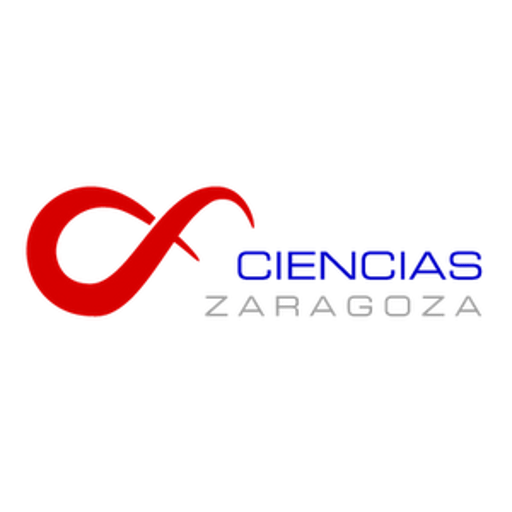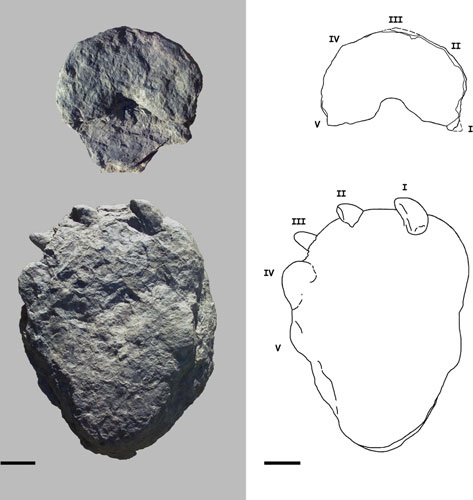Acabamos de publicar un trabajo en la prestigiosa revista Lethaia estudiando un par de rastros de tipo intermedio del Berriasiense de Soria. Los rastros son de la Ruta de las Icnitas de Soria. Uno de ellos se puede visitar en la localidad de los Campos (Salgar de Sillas), el otro se encuentra en Santa Cruz de Yanguas. En la ruta se han preparado una docena más de yacimientos para que puedan ser visitados por el público. En la fotografía se puede ver alguna de las magníficas icnitas del yacimiento de Santa Cruz de Yanguas
Este trabajo, liderado Diego Castanera y que también participa Carlos Pascual especialista e icnitas de Soria se estudia la variabilidad de la anchura de los rastros. En ambos casos la anchura varía debido a comportamientos de los saurópodos. En uno de los ejemplos se debe a una disminución en la velocidad del dinosaurios, seguramente debido a diferencias en las condiciones del substrato. En otro de los ejemplos se relaciona con un cambio de dirección del saurópodo. Documentar que en un mismo rastro puede variar la anchura es importante, esto significa que su uso para reconocer un particular taxón de saurópodo tiene sus limitaciones.
Castanera, D., Pascual, C., Canudo, J.I., Hernández, N., Barco, J.L. 2012. Ethological trackway gauge variations in sauropod trackways from the Huérteles Alloformation (Berriasian) of the Cameros basin (Iberian Range, Spain). Lethaia, DOI: 10.1111/j.1502-3931.2012.00304.x
El resumen original es: Two sauropod trackways from the Early Cretaceous (Berriasian) of the Cameros Basin (Spain) show important variations in trackway gauge, along the same trackway. These variations seem to be associated with different behaviours; on the one hand with a significant variation in the direction of travel (turning phenomena) and on the other hand with a decrease in speed, probably associated with the properties of the substrate. These variations in sauropod trackways provide the trackway gauge debate with new data, supporting the hypothesis that the walking style and substrate properties may in some cases determine this sauropod character. The study of turning sauropod trackways improves our knowledge of sauropod locomotion.
Este trabajo, liderado Diego Castanera y que también participa Carlos Pascual especialista e icnitas de Soria se estudia la variabilidad de la anchura de los rastros. En ambos casos la anchura varía debido a comportamientos de los saurópodos. En uno de los ejemplos se debe a una disminución en la velocidad del dinosaurios, seguramente debido a diferencias en las condiciones del substrato. En otro de los ejemplos se relaciona con un cambio de dirección del saurópodo. Documentar que en un mismo rastro puede variar la anchura es importante, esto significa que su uso para reconocer un particular taxón de saurópodo tiene sus limitaciones.
Castanera, D., Pascual, C., Canudo, J.I., Hernández, N., Barco, J.L. 2012. Ethological trackway gauge variations in sauropod trackways from the Huérteles Alloformation (Berriasian) of the Cameros basin (Iberian Range, Spain). Lethaia, DOI: 10.1111/j.1502-3931.2012.00304.x
El resumen original es: Two sauropod trackways from the Early Cretaceous (Berriasian) of the Cameros Basin (Spain) show important variations in trackway gauge, along the same trackway. These variations seem to be associated with different behaviours; on the one hand with a significant variation in the direction of travel (turning phenomena) and on the other hand with a decrease in speed, probably associated with the properties of the substrate. These variations in sauropod trackways provide the trackway gauge debate with new data, supporting the hypothesis that the walking style and substrate properties may in some cases determine this sauropod character. The study of turning sauropod trackways improves our knowledge of sauropod locomotion.
LUGAR Soria, España



















